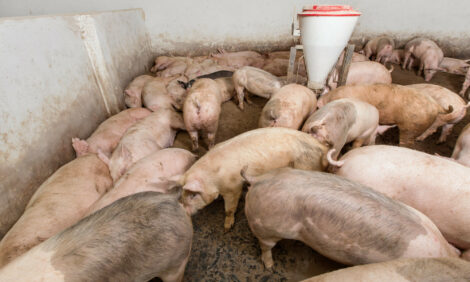



Cereal Beta-glucan Alters Nutrient Digestibility and Microbial Activity in the Intestinal Tract of Pigs and Lowers Manure Ammonia Emission: A Meta-analysis
Beta-glucan in cereal fed ingredients decrease nutrient digestibility, stimulate caecal butyrate and reduce manure ammonia emissions, according to new research from Austria. These effects were found to be weight/age-dependent.Cereal β-glucan may be detrimental in pig production because of negative effects on nutrient digestibility but they may act as functional ingredients by stimulating the intestinal microbiota, according to a recent paper in Journal of Animal Science.
Barbara Metzler-Zebeli and Q. Zebeli from the University of Veterinary Medicine in Vienna, Austria, explain that their study primarily aimed to investigate relations between dietary β-glucan and nutrient digestibility, intestinal fermentation and manure ammonia emission in weaned, growing and finishing pigs.
Effects of dietary xylose, neutral detergent fibre (NDF) and crude protein and pig’s bodyweight on animal responses were also evaluated.
A meta-analytical approach, accounting for inter- and intra-experiment variations, was used to compute prediction models. Data from 26 studies including 107 different dietary treatments with appropriate dietary and physiological measurements were used to parameterise these models.
Dietary β-glucan concentration ranged from 0 to 6.7 per cent. Increasing dietary β-glucan reduced apparent ileal (AID) and total tract digestibility (ATTD) of CP and energy (R2=0.12 to 0.29; P<0.05), whereas the ATTD of dry matter was reduced by 10 per cent up to a threshold β-glucan level of 3.5 per cent, above which the response became asymptotic (R2=0.34; P<0.01).
Increasing dietary NDF content decreased ATTD of dry matter and energy, and increasing xylose concentration reduced ATTD of energy and CP (R2=0.24 to 0.85; P<0.05).
Broken-line model indicated that caecal total volatile fatty acids (VFA) and butyrate concentrations increased up to a threshold of 2.5 and 1.4 per cent β-glucan in the diet, respectively, above which these responses became asymptotic (R2=0.77 to 0.96; P<0.05).
Ileal butyrate was negatively and colonic iso-butyrate was positively linked to increasing β-glucan concentration (R2=0.17 to 0.41; P<0.05).
Greater β-glucan concentration were negatively related (R2=0.86; P<0.01) with ammonia emission, indicating a reduction in ammonia emission by half with six per cent β-glucan.
Backward elimination analysis indicated that greater bodyweight of pigs counteracted (P<0.05) the negative effect of β-glucan on AID of crude protein and energy and ATTD of dry matter and crude protein.
Pig bodyweight also enhanced effects of β-glucan on caecal total VFA, colonic iso-butyrate, ileal butyrate and ammonia emission (P<0.05).
Dietary crude protein level potentiated (P<0.01) the β-glucan effects on caecal total VFA, caecal butyrate and colonic iso-butyrate.
The study indicates that β-glucan can stimulate caecal butyrate and ameliorate manure ammonia emission, thereby decreasing nutrient digestibility, concluded Metzler-Zebeli and Zebeli. They added that, because greater bodyweight ameliorates the β-glucan effects, finishing diets may be formulated to contain more β-glucan than weaner diets.
Reference
Metzler-Zebeli B.U. and Q. Zebeli. 2013. Cereal β-glucan alters nutrient digestibility and microbial activity in the intestinal tract of pigs, and lower manure ammonia emission: A meta-analysis. J. Anim. Sci. Published online before print April 9, 2013, doi: 10.2527/jas.2012-5547
May 2013








